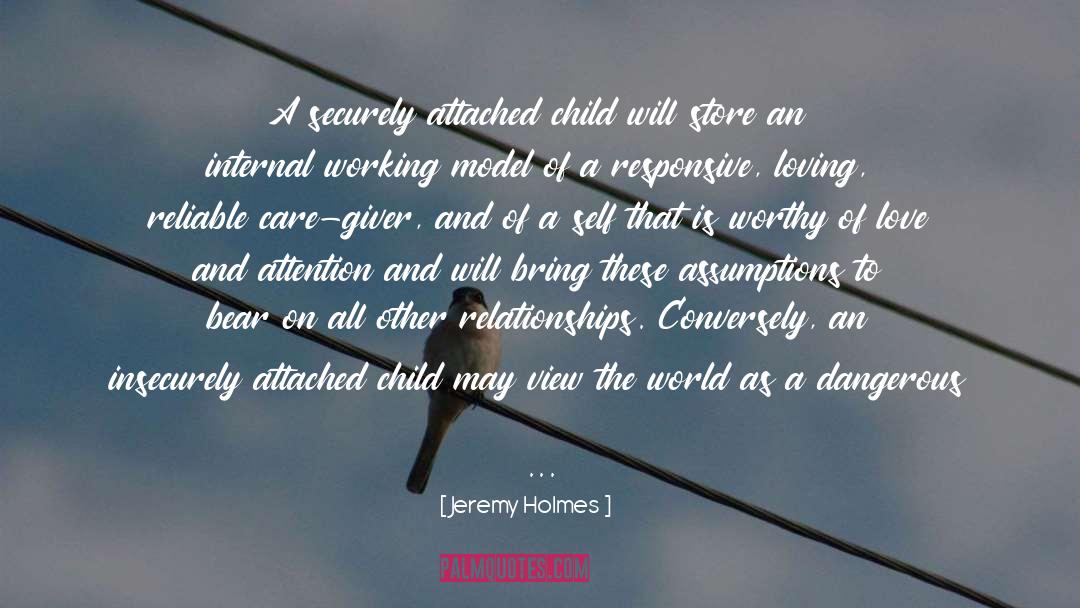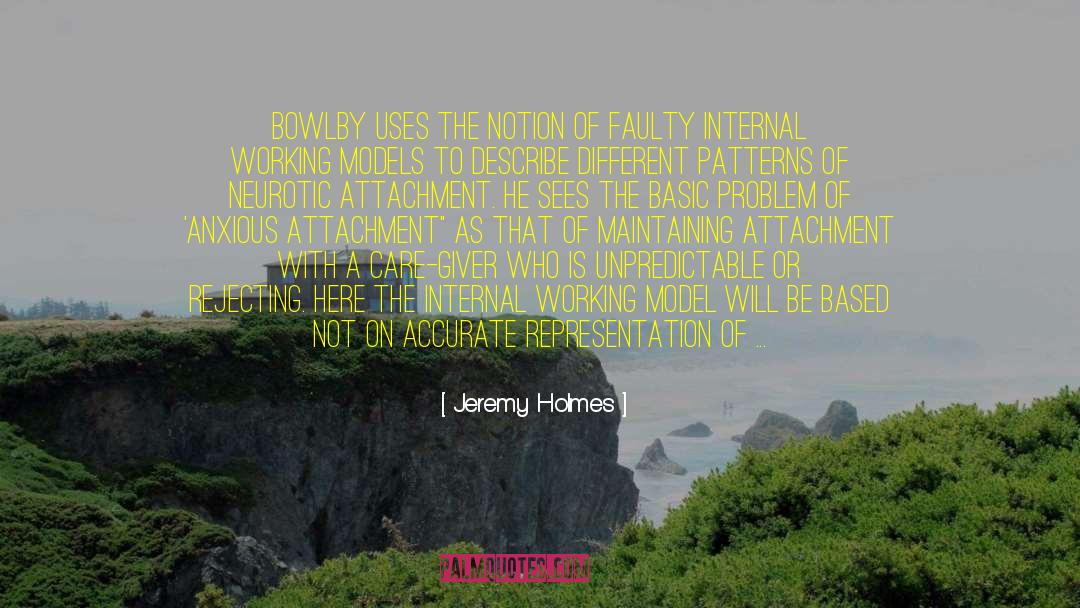Jeremy Holmes Famous Quotes
Reading Jeremy Holmes quotes, download and share images of famous quotes by Jeremy Holmes. Righ click to see or save pictures of Jeremy Holmes quotes that you can use as your wallpaper for free.
Bowlby's conviction that attachment needs continue throughout life and are not outgrown has important implications for psychotherapy. It means that the therapist inevitably becomes an important attachment figure for the patient, and that this is not necessarily best seen as a 'regression' to infantile dependence (the developmental 'train' going into reverse), but rather the activation of attachment needs that have been previously suppressed. Heinz Kohut (1977) has based his 'self psychology' on a similar perspective. He describes 'selfobject needs' that continue from infancy throughout life and comprise an individual's need for empathic responsiveness from parents, friends, lovers, spouses (and therapists). This responsiveness brings a sense of aliveness and meaning, security and self-esteem to a person's existence. Its lack leads to narcissistic disturbances of personality characterised by the desperate search for selfobjects - for example, idealisation of the therapist or the development of an erotic transference. When, as they inevitably will, these prove inadequate (as did the original environment), the person responds with 'narcissistic rage' and disappointment, which, in the absence of an adequate 'selfobject' cannot be dealt with in a productive way.

Attachment exerted an invisible but powerful pull on the child, just as heavenly bodies are connected by gravitational forces. But unlike gravity, attachment makes its presence known by a negative inverse square law: the further the attached person is from their secure base, the greater the pull of attachment. The 'elastic band' which constitutes the attachment bond is slack and imperceptible in the presence of a secure base. If the secure base becomes unreliable or the limits of exploration are reached, the bond tugs at the heartstrings.

So it is with grief where, if all goes well, can come a strengthening of the inner world, of memory and definition.

A securely attached child will store an internal working model of a responsive, loving, reliable care-giver, and of a self that is worthy of love and attention and will bring these assumptions to bear on all other relationships. Conversely, an insecurely attached child may view the world as a dangerous place in which other people are to be treated with great caution, and see himself as ineffective and unworthy of love. These assumptions are relatively stable and enduring: those built up in the early years of life are particularly persistent and unlikely to be modified by subsequent experience.

Bowlby uses the notion of faulty internal working models to describe different patterns of neurotic attachment. He sees the basic problem of 'anxious attachment" as that of maintaining attachment with a care-giver who is unpredictable or rejecting. Here the internal working model will be based not on accurate representation of the self and others, but on coping, in which the care-giver must be accommodated to. The two basic strategies here are those of avoidance or adherence, which lead to avoidant or ambivalent attachment.

In Separation (1973a), Bowlby puts forward a theory of agoraphobia based on the notion of anxious attachment. He sees agoraphobia, like school phobia, as an example of separation anxiety. He quotes evidence of the increased incidence of family discord in the childhoods of agoraphobics compared with controls, and suggests three possible patterns of interaction underlying the illness: role reversal between child and parent, so that the potential agoraphobic is recruited to alleviate parental separation anxiety; fears in the patient that something dreadful may happen to her mother while they are separated (often encouraged by parental threats of suicide or abandonment); and fear that something dreadful might happen to herself when away from parental protection.

